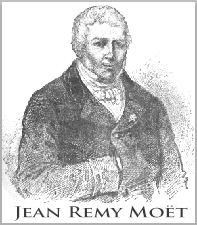Champagne Through the Ages
Reims was a major commercial crossroads as far back as the Roman times and that meant trade in wine. It is no surprise Reims was selected for its now famous Gothic Cathedral where over 25 royal coronations took place where you can see the Chagall stained glass windows, and the rib caged stone vaulted ceiling.
We head to the Grand Cru village of Ay, located in the Marne Valley, to visit Champagne Collet's cellars and vines. Collet is the oldest grower cooperative in the region.
Discover the village of Hautvillers, perched on a site overlooking vine-covered hills, for a light tasting lunch and quick visit to see the gravestone of the Benedictine monk and winemaking pioneer Dom Perignon.
The last visit is at Nicolas Feuillatte, which has achieved the top sales spot in France since 2010 - and the world’s third leading Champagne brand for volume sold. The House represents nearly 5,000 partner growers, sourced over 2,100 hectares of vineyards.
Highlights
• Reims UNESCO Cathedral Visit (Self Guided) PLUS
• Dom Perignon's tomb in the village of Hautvillers PLUS
• Public group visit of Champagne Collet followed by a tasting PLUS
• Visit Ch. Nicolas Feuillatte OR 1 family vineyard visit for multi tastings
A Brief History of Champagne
From the time of Attila the Hun to the Germans of World War II, waves of invaders have tried to conquer the verdant region of Champagne in northern France. Yet this strife-torn land is also the birthplace of the world's favorite wine: champagne.
How this sparkling wine, born of bloodshed, became a symbol of glamour, good times, and celebration. It's a story filled with larger-than-life characters: Dom Perignon, the father of champagne, who, contrary to popular belief, worked his entire life to keep bubbles out of champagne; the Sun King, Louis XIV, who rarely drank anything but; and Napoleon, who, in trying to conquer the world, introduced it to champagne.
Then there were the generations of local vintners who struggled to keep their houses running. Claude Moet hauled his bottles to Versailles and gave Madame de Pompadour her first taste of bubbly, prompting her memorable quote, "Champagne is the only wine that lets a woman remain beautiful after she has drunk it." There was also Charles-Camille Heidsieck, known as "Champagne Charlie," who popularized champagne in America and ended up being imprisoned as a spy during the Civil War.

World War I would be greatest test of all for the beverage, a four-year nightmare in which nearly everything the Champenois had worked and fought for was destroyed "in a rain of iron and fire." German bombardment drove thousands of people underground to seek refuge in the huge cellars of the champagne houses, where among the bottles you would find schools, hospitals, shops, municipal offices, and troops.
Winemaking in the region dates to ancient Roman times. Following the Crusades, monastic holdings of vineyards increased significantly. Wines were often served by the Church during coronations, sacrament and the consecration of treaties.
During the 17th century that the bubbles were discovered by accident. The question of who actually invented Champagne is an interesting one. Contrary to popular belief, the Abbey of Hautvillers cellar master Dom Pierre Perignon did not invent Champagne however, he did pioneer many practices that enhanced both the taste and quality of Champagne.
Dom Perignon believed the wine bubbles to be a defect as did the King. In fact, the Church wanted to tame the effervescence which caused so many wine bottles to explode in the region's monastic cellars. Louis XIV did help to establish Champagne's royal status by drinking non sparkling red wine from Les Riceys almost exclusively
It was in fact from a practical point of view the British made the first discovery, after importing still wine, found on arrival that some of the wooden barrels had fermented and contained bubbles.
The Brits enjoyed the fizzy and wanted more but they did not, at that time understand why it happened. The good news was that they did have the glass technology to bottle the fizzy Champagne so they could serve it at parties. Historical records point to Christopher Merret, an English scientist and physician, as the first to publish details on a second fermentation process in wine around 1662, Merret's papers document how English cider makers had begun adding sugars to wine to create a sparkling drink similar to the Champagne we know today.
